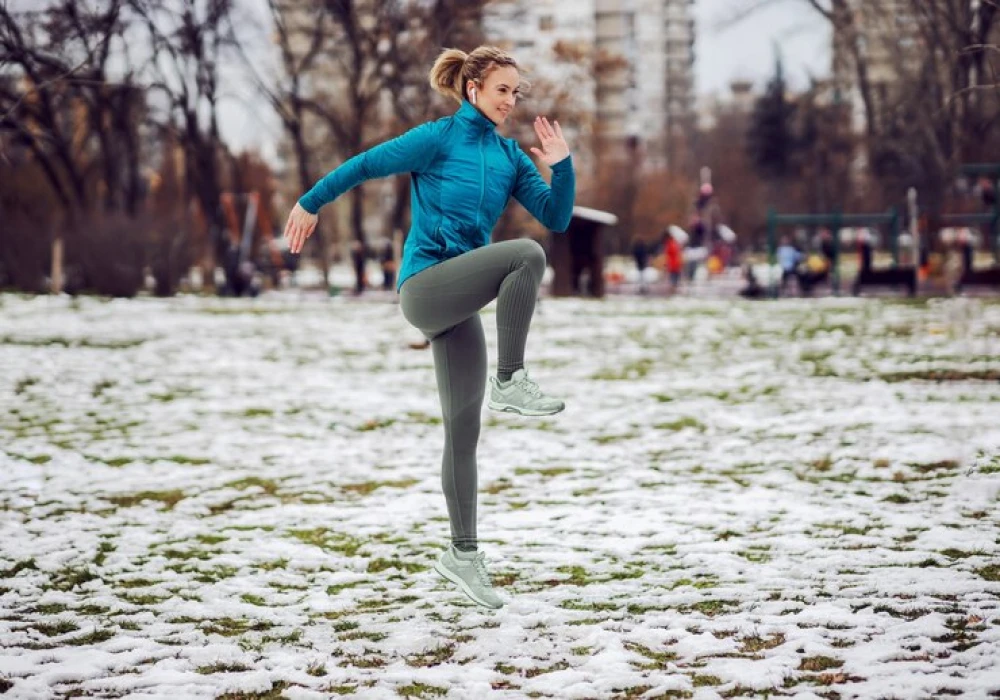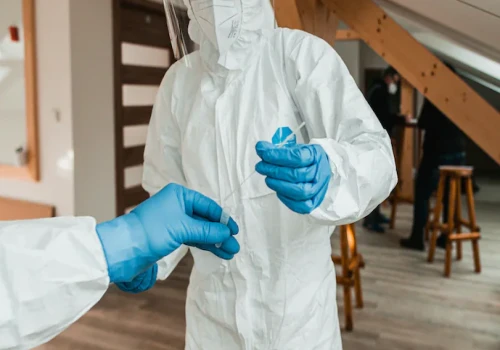
Exercising in cold weather can be tough, but warming up properly can help you stay safe and avoid injuries.
A good warm-up prepares your body for exercise by increasing blood flow and flexibility.
You must follow these 10 easy warm-up tips listed by the best gym equipment manufacturers to follow before working out in the cold.
Start Slow
Begin with a light activity, like walking or slow jogging.
This helps your body adjust to the cold gradually.
Starting slow allows your muscles to warm up without shocking them.
It also increases blood flow to your muscles and joints.
Avoid jumping straight into intense exercise.
A slow start reduces the risk of injuries like strains or pulls.
Once you feel warmer, you can increase your pace.
This gives your body time to prepare for more intense activity.
Wear Layered Clothing
Dress in layers to stay warm and comfortable.
Start with a light, moisture-wicking base layer to keep sweat off your skin.
Add a warm middle layer to keep your body heat in, like a fleece or sweater.
Use a windproof or waterproof outer layer to protect against wind or rain.
Layers help trap warmth while letting you remove clothes as you get warmer.
Make sure your clothes are not too tight, so blood can flow easily.
Wear a hat, gloves, and warm socks to protect your head, hands, and feet.
Focus on Major Muscle Groups
Warm up the muscles you will use the most during exercise.
Focus on your legs, arms, and core.
For legs, try light lunges or leg swings to get them moving.
For arms, do arm circles or shoulder rolls.
Warm up your core with gentle twists or side bends.
Targeting these areas helps prepare your body for the activity ahead.
This reduces stiffness and makes movement easier.
Stretch Gently
Start with light stretching to improve flexibility.
Stretch only to a comfortable point, never too far.
Focus on areas like your legs, arms, and back.
Stretching helps your muscles move more easily.
Avoid holding stretches for too long when cold, as muscles are tighter.
Move slowly into each stretch, don’t force it.
Stretching helps prevent injury and improves range of motion.
Use Dynamic Movements
Do movements that get your muscles moving, not holding a stretch.
Try leg swings, arm circles, or gentle lunges.
These exercises warm up your muscles and joints without making them stiff.
Dynamic movements help improve flexibility and coordination.
They get your heart rate up gradually.
You don’t need to stretch deeply; just move your body in different directions.
These movements help activate your muscles, so they’re ready for exercise.
Activate Your Joints
Move your joints gently to reduce stiffness.
Start with small circles for your wrists, ankles, and shoulders.
Rotate your neck slowly to loosen it up.
Focus on the joints you will use most during your workout.
Joint rotations help increase blood flow and flexibility.
They prepare your joints for the pressure and movements in exercise.
This simple warm-up can help prevent joint injuries.
Make sure the movements are smooth and controlled, not jerky.
Increase Your Heart Rate Gradually
Start with light cardio to slowly raise your heart rate.
Try walking, slow jogging, or cycling at a gentle pace.
Gradually increase the speed as your body warms up.
This helps your heart and lungs get ready for exercise.
A slow increase in heart rate reduces the shock on your body.
It also improves blood flow to muscles, making them ready for action.
As per a company of complete gym setup in India, avoid jumping straight into intense cardio.
Warm Up for 10-15 Minutes
Spend about 10-15 minutes warming up before exercise.
This time is enough to prepare your body for physical activity.
A good warm-up raises your heart rate and loosens your muscles.
It helps prevent injuries by getting your body ready.
Don’t rush; take your time to warm up properly.
This allows your muscles to gradually adjust to the cold weather.
You can do light cardio, stretching, or dynamic movements during this time.
Keep Your Hands and Feet Warm
Wear gloves to keep your hands warm during exercise.
Make sure your feet are warm with thick, comfortable socks.
Cold hands and feet can distract you and reduce performance.
Use warm footwear if you plan to walk or run outside.
If it’s very cold, consider wearing a hat or headband to keep heat in.
Keeping your hands and feet warm helps blood flow to your muscles.
It’s easier to exercise and avoid discomfort when your body parts are warm.
Drink Water
Drink water before and during your warm-up to stay hydrated.
Even in cold weather, your body needs water to perform well.
Hydration helps keep your muscles and joints working properly.
Drinking water also helps control your body temperature.
Avoid drinking too much at once; small sips are enough.
Being hydrated reduces the risk of muscle cramps and fatigue.



_500_x_350.webp)






